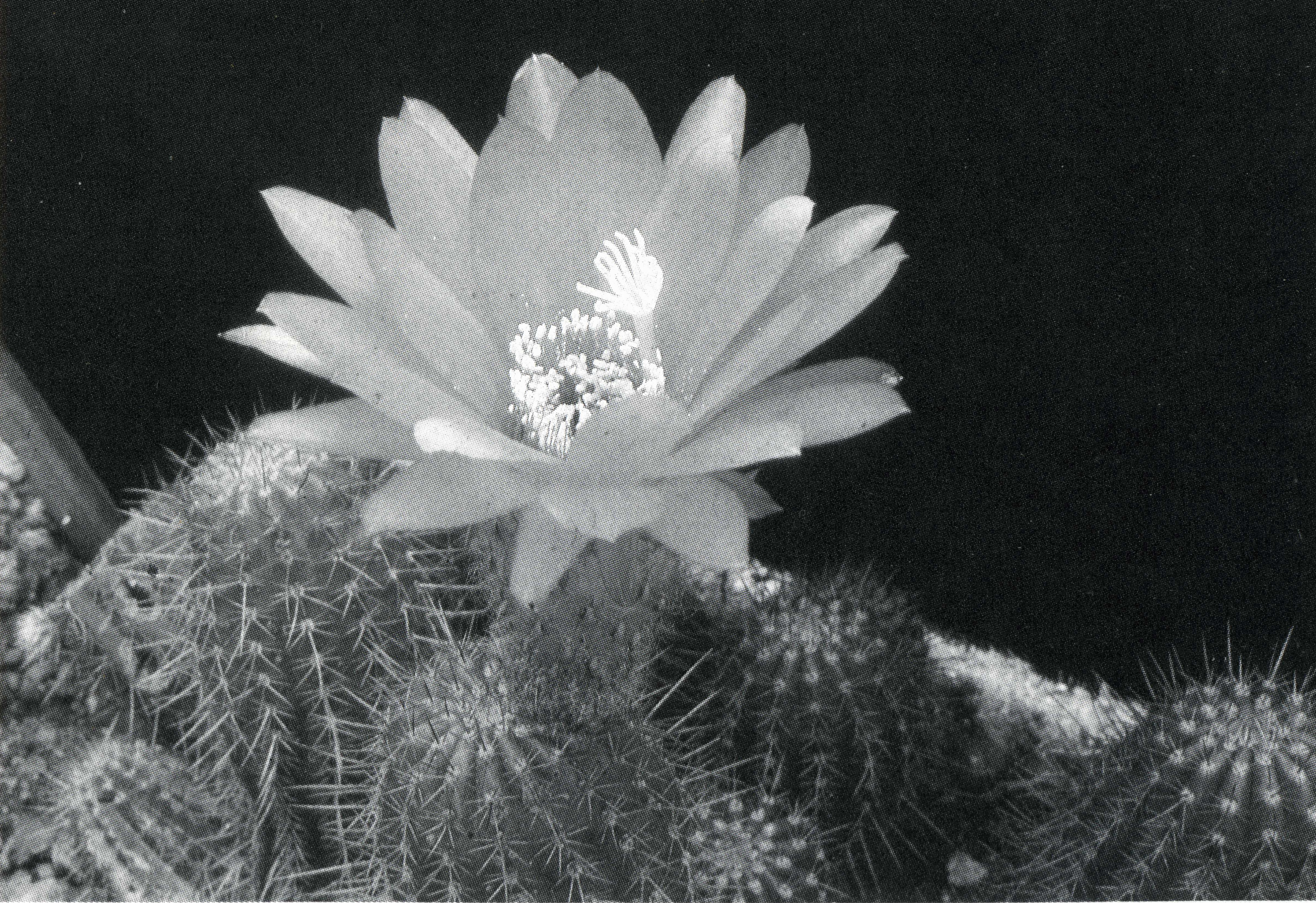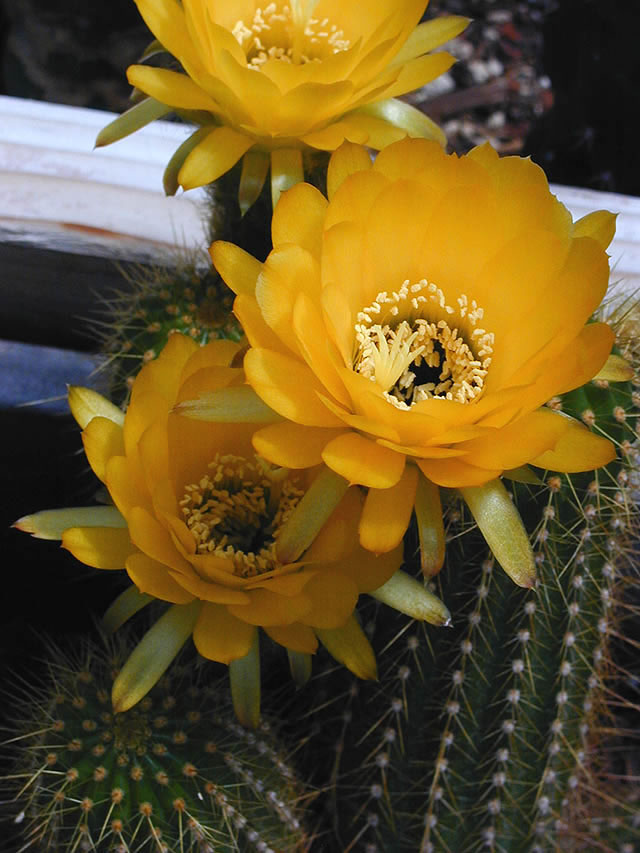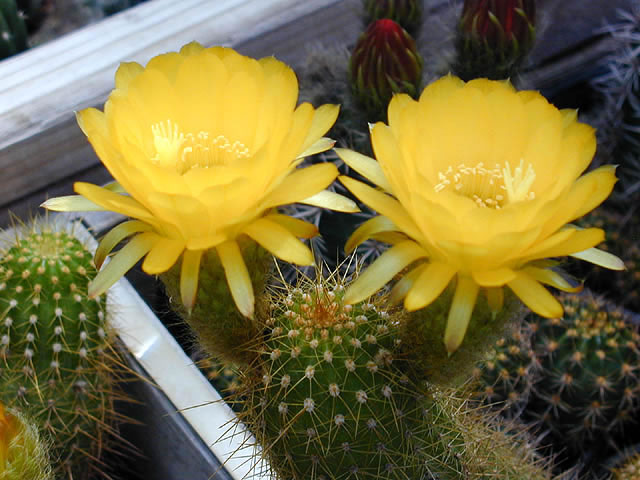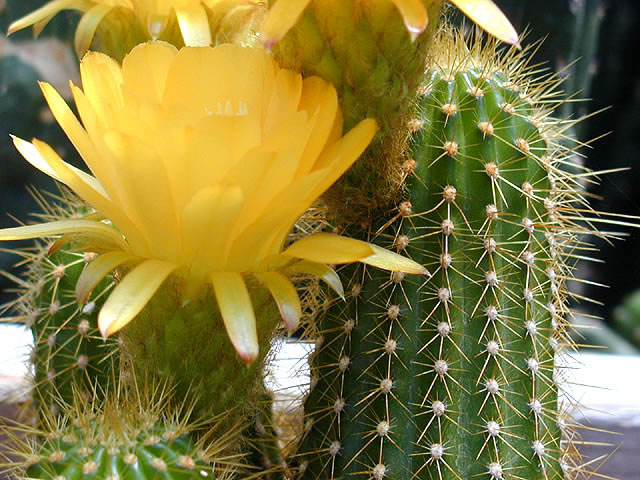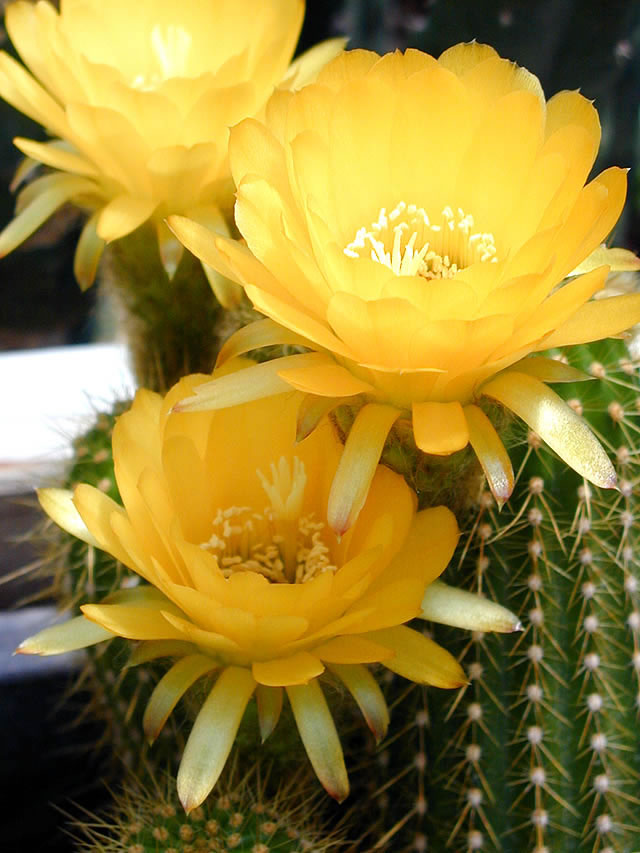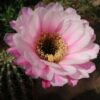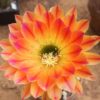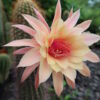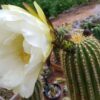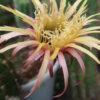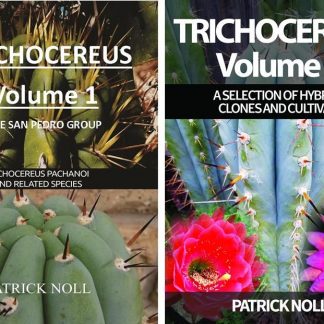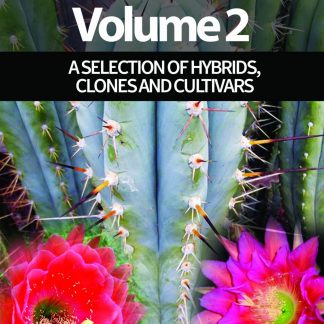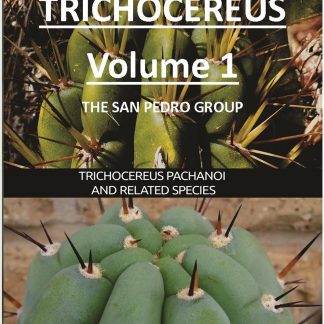
Trichocereus andalgalensis has a weird & complicated history. The name first appeared in 1893 in the MONATSZEITSCHRIFT FÜR KAKTEENKUNDE, which is a German publication about cacti. The plant was originally introduced into the world of taxonomy as a red flowering variety of Cereus huascha (Trichocereus huascha). In his book, Schuman mentioned that Weber described this plant and regard the red flowering variety of Cereus huascha (now Trichocereus huascha) to be a separate species called Cereus andalgalensis. The plant is very similar to Trichocereus huascha and was recently declared to be synonymous with Trichocereus huascha. The current taxonomy tends to merge relative plants together in larger, more variable species and I absolutely agree with that. The species was originally found near Andalgala, has very fine yellow spines and is sprouting from the base.
Synonyms: Echinopsis andalgalensis, Lobivia andalgalensis, Cereus andalgalensis, Cereus huascha var. rubriflorus, Trichocereus huascha var. rubriflorus
Now back to the time when Cereus andalgalensis was first desctribed. Back then, a cactus enthusiast and taxonomist called Spegazzini somehow got the idea that the name Cereus andalgalensis would actually be about a small Lobivia that was found near Ancasti. Which was absolutely not the case, since Trichocereus Andalgalensis is a columnar cactus that grows very much like Trichocereus Huascha (but does not get as big) and not a small clumping Lobivia.
And when Britton & Rose wrote their cactus manifest called THE CACTACEAE, they did not realize that Spegazzini described a completely different plant and published the troubled description in their as Lobivia andalgalensis B&R and declared that Lobivia to be synonymous with the red flowering variety of Trichocereus huascha (Trichocereus andalgalensis), which back then was called Cereus huascha Rubriflorus. Now, there were two different plants that were considered to be the same plant. And one (the Lobivia) did absolutely not fit into Weber´s old description of a columnar cactus.
Weber originally gave Andalgala in the province Catamarca to be the type location of the plant. Exactly where Rauh found a small clustering Trichocereus that fit into Webers old description and which was most likely the original origin of Trichocereus andalgalensis, which was back then still called Cereus andalgalensis.
Description: Trichocereus andalagensis is bright green in color and reaches a maximum diameter of up to 6 centimeters. The shoots can reach a maximum height of 10-40 Centimeters. It´s pretty typical for this plant to sprout abundantly from the base, even at a relatively young age.
Ribs: Trichocereus andalgalensis has 10-18 Ribs that are up to 5 mm high and between 5-10 mm wide. The areoles are brown and declining in color with age. The areoles are between 1-3 mm in diameter and 5-10 mm apart of each other.
Spines: The spines of Trichocereus andalgalensis are yellow, very similar as the ones on Trichocereus spachianus. All spines are very fine and needle-like. It has 7-15 radial spines that can get up to 1,5 mm long and 1-2 middle spines, which are 1-4 cm long.
Flowers: The flowers are usually red and up to 8,5 cm long, what makes the flower of Trichocereus andalgalensis one of the smallest flowers on a Trichocereus species. The flowers are and have a lot of brown hairs. There also is a variety with a yellow flower. The yellow variety is called Trichocereus andalgalensis var. flaviflorus and the red flowering one is Trichocereus andalgalensis var. rubriflorus.
Where to buy seeds or plants of Trichocereus andalgalensis?: There only are a couple of sources where you can get seeds of Trichocereus andalgalensis. One is Sacred Succulents, which was offering very viable seeds of this amazing cactus. Köhres has them in stock sometimes too though I have no idea how the germination rate of those is. Apart from that, I am not aware of any commercial sources that sell this seed. If you have a shop and have them in stock, you can let me know and I´ll add you to this page. You can also make a posting about Trichocereus andalgalensis in our Trichocereus Facebook Group. It´s not a very common type, but chances are some of our older members might still have some from the time when Friedrich Ritter sold seeds of this plant as FR 428.
This b/w pic shows Trichocereus Andalgalensis var. auricolor. It is probably the same type as shown in the color pics below.
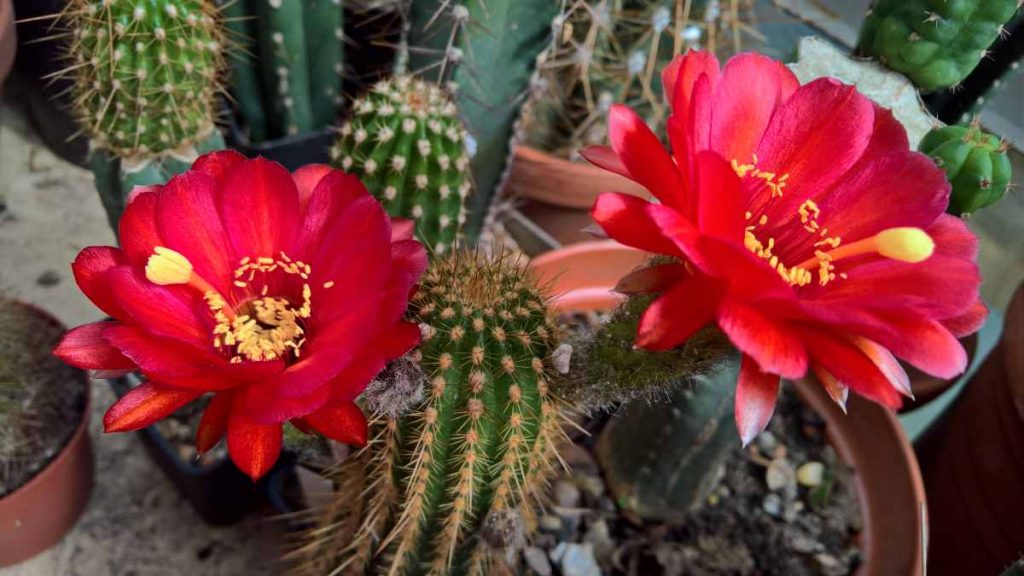
Trichocereus huascha v. andalgalensis
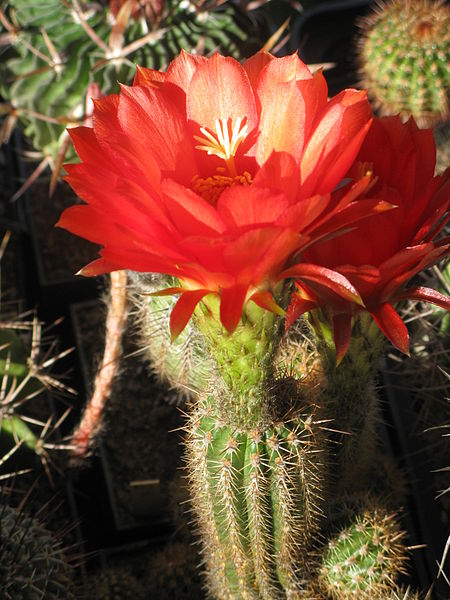
Photo: Jofre Vlastni
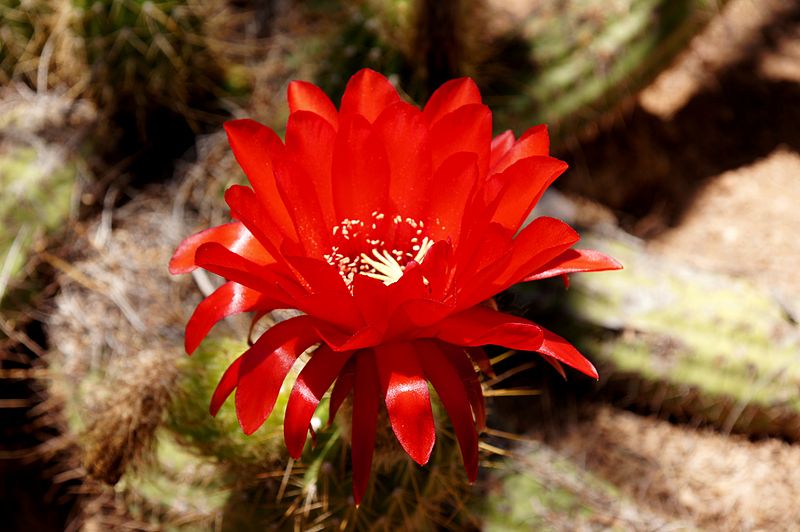
Photo: Allie Caulfeld
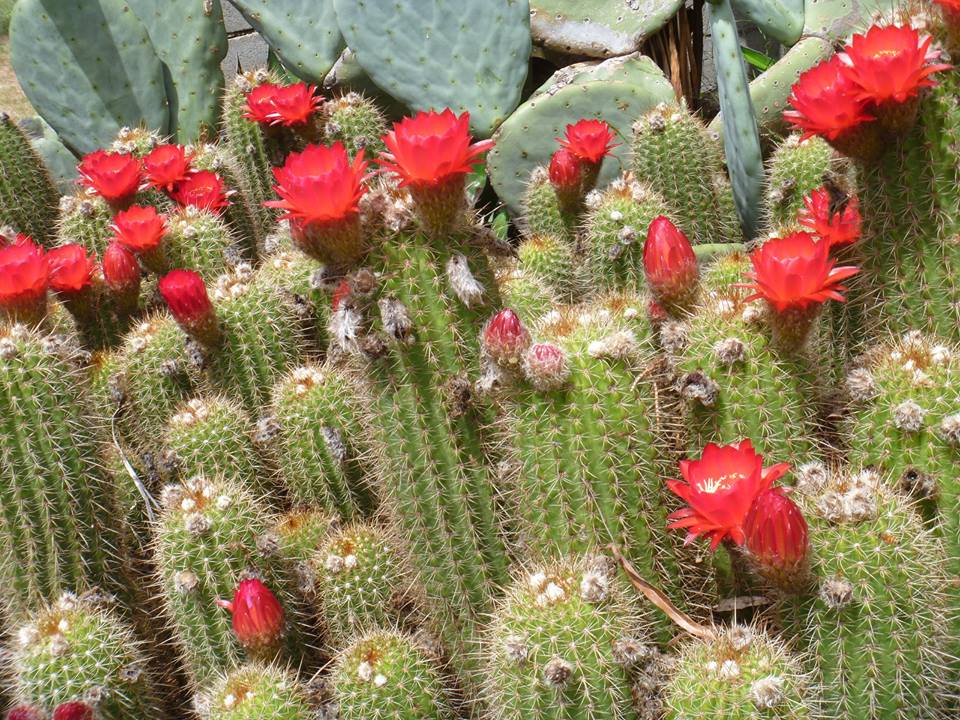
Pics below show a Yellow flowering version: K.Trout – Troutsnotes.com
Unfortunately, I do not have pics of the red flowering Trichocereus andalgalensis but I will add more pics as soon as I get some.

